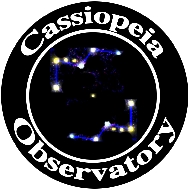iPhone Astrophotography Jupiter, DSOs
Posted: 22 March 2025
|
Open: Friday, 21 March 2025, 1810 MST Temperature: 84°F |
Session: 2083 Conditions: Clear |
Equipment:
12" f/8 LX600 w/StarLock
2" 24mm UWA eyepiece
2" 5.5mm 100° eyepiece
Camera:
iPhone 15 Pro Max
1815 MST: LX600 ON, StarLock OFF, High Precision OFF.
Viewed Jupiter, 102X and 443X.
1839 MST: Sunset.
Attached the LiDAR Cover on the iPhone 15 Pro Max and mounted the iPhone on the 2" 5.5mm eyepiece using the 3-axis adapter. Did some afocal 443X imaging of Jupiter and the four Galilean Moons in the eyepiece field-of-view.
NightCap Camera app (ISO 55, 1/13sec, 1X lens)
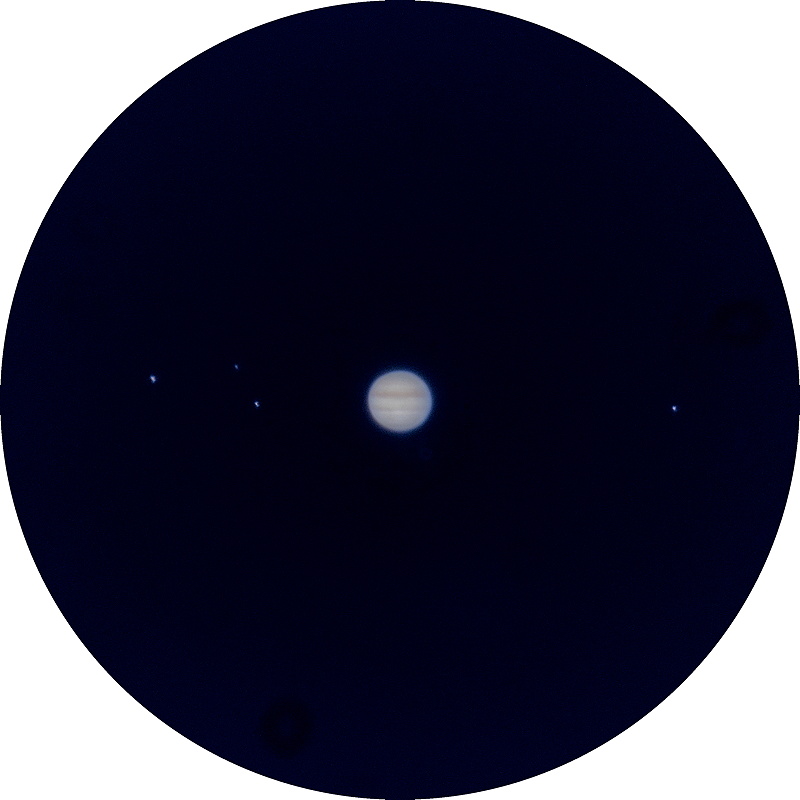
Camera app (1X lens)
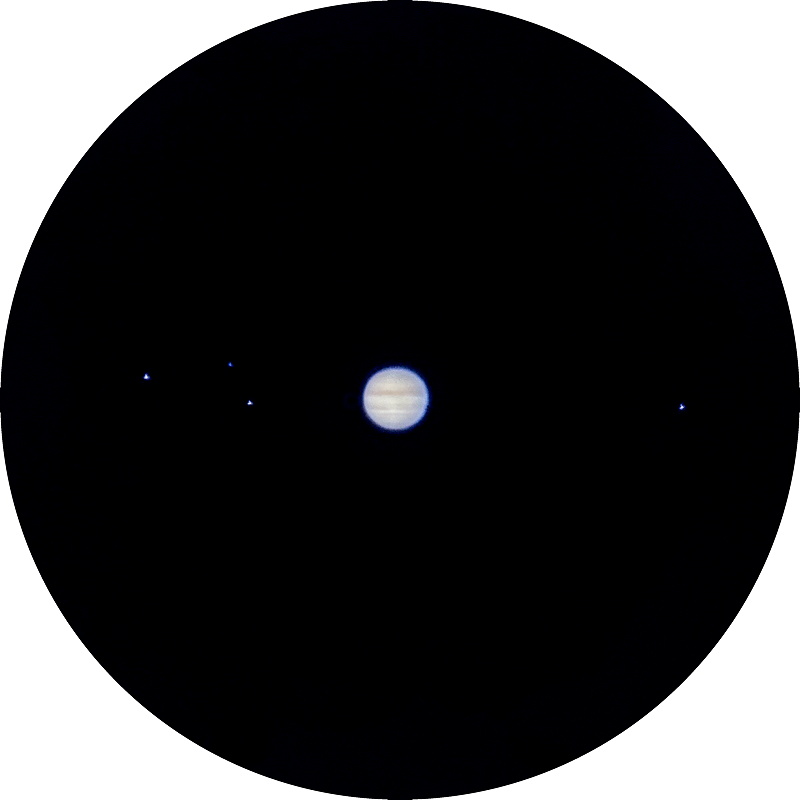
Final Cut Camera app (ISO 2000, 1/250sec, 1X lens, 240fps, 3763 frames stacked)
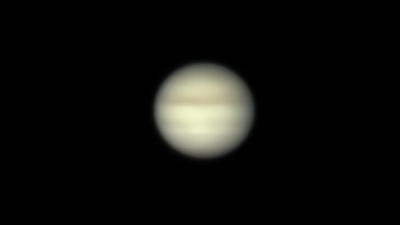
Viewed Jupiter and the four Galilean Moons, 443X and 102X.
1859 MST: Viewed M42 (Orion Nebula), 102X. The Trapezium stars were visible, but no nebulosity was seen in the bright twilight sky.
1903 MST: Took this handheld iPhone afocal 102X image of M42 using NightCap Camera (ISO 10000, 1/13sec, 1X lens) showing the Trapezium (center) and some nebulosity.
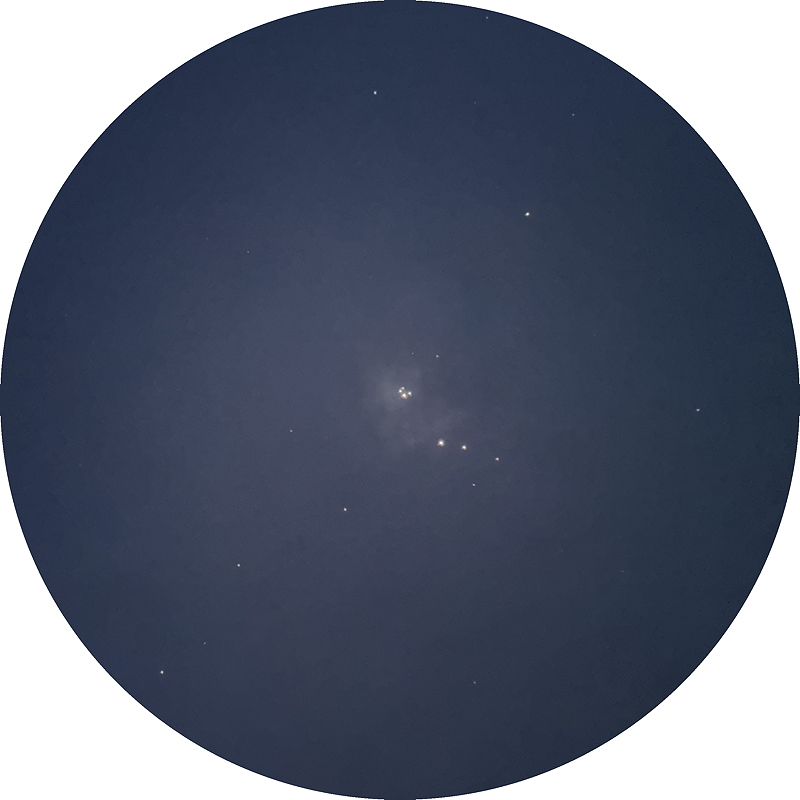
1906 MST: Viewed M42, 102X. Some nebulosity was now visible to the eye in the bright twilight sky.
Viewed M41 (open star cluster), 102X. Nice view.
1912 MST: Took this handheld iPhone afocal 102X image of M41 using NightCap Camera (ISO 16000, 1/13sec, 1X lens).
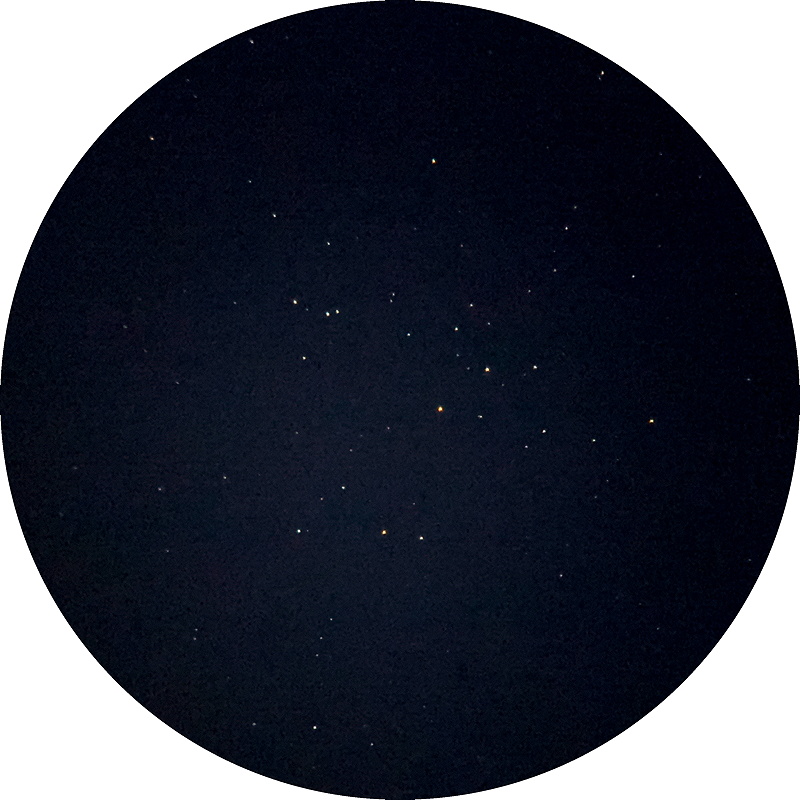
1917 MST: Viewed M42 again, 102X. More nebulosity was now visible in the still bright twilight sky.
Due to a busy day the next day I ended this session in Cassiopeia Observatory.
1918 MST: LX600 OFF.
|
Close: Friday, 21 March 2025, 1925 MST Temperature: 66°F |
Session Length: 1h 15m Conditions: Clear |
Comments are welcome using Email. Please read the Email Etiquette guidance.
Cassiopeia Observatory Home Page
Copyright ©2025 Michael L. Weasner / mweasner@mac.com.
URL = http://www.weasner.com/co/Reports/2025/03/22/index.html
